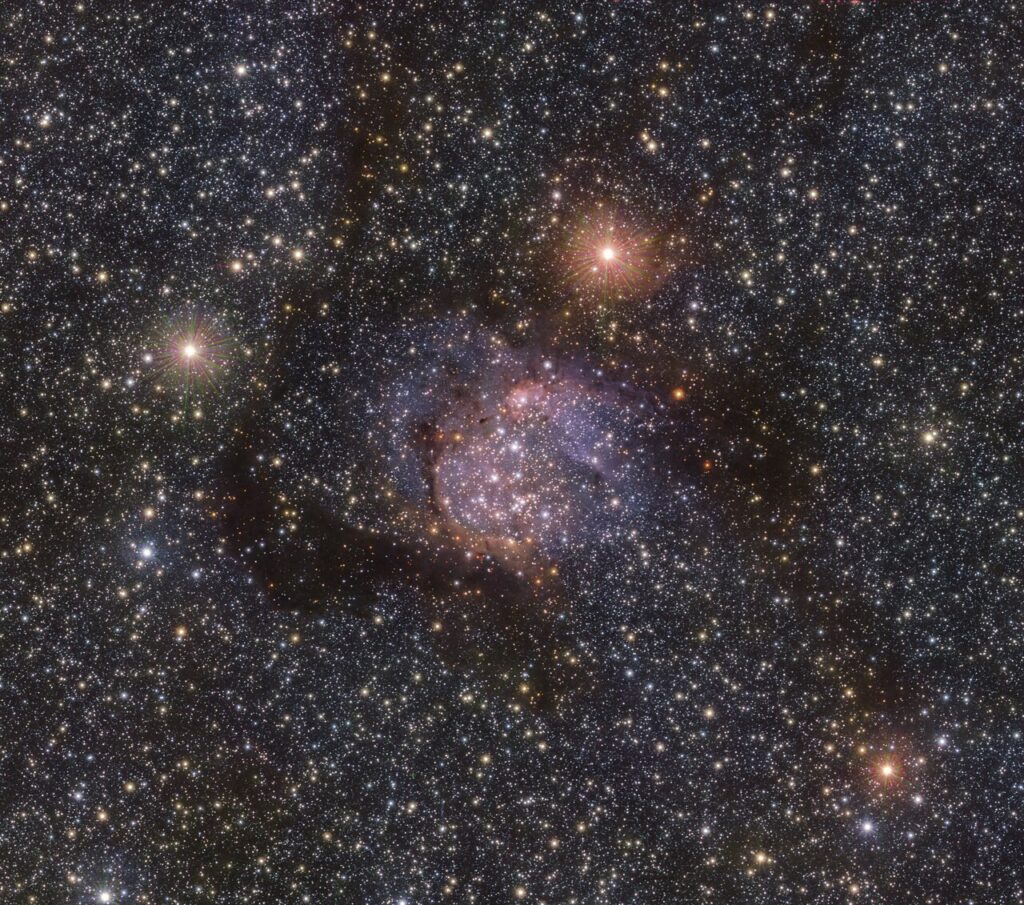A myriad of stars have been revealed behind the faint orange glow of nebula Sh2-54 in a new infrared image taken by the European Southern Observatory (ESO).
Located in the Serpent constellation, this impressive stellar nursery was captured in all its intricate detail using the Visible and Infrared Survey Telescope for Astronomy (VISTA) located at ESO's Paranal Observatory in Chile.
When the ancients looked at the night sky, they saw random patterns in the stars. The Greeks, for example, named one of these “constellations” Serpent, due to its resemblance to a serpent. What they wouldn't have been able to see is that at the tail end of this constellation is a wealth of amazing astronomical objects.
These include the Eagle, the Omega and the Sh2-54 nebula; the last of these is revealed, in a new light, in this spectacular infrared image.
Nebulae are vast clouds of gas and dust from which stars are born. Telescopes have allowed astronomers to identify and analyze these very faint objects in exquisite detail.
The nebula shown here, located about 6000 light-years away, is officially named Sh2-54; the “Sh” refers to American astronomer Stewart Sharpless, who cataloged over 300 nebulae in the 1950s.
As the technology used to explore the Universe advances, so does our understanding of these stellar nurseries. One such advance is the ability to look beyond light that can be detected by our eyes, such as infrared light.
Just as the snake, this nebula's namesake, developed the ability to sense infrared light to better understand its environment, so we have developed infrared instruments to learn more about the Universe.
While visible light is easily absorbed by dust clouds in nebulae, infrared light can pass through thick layers of dust almost unimpeded. The image here therefore reveals a wealth of stars hidden behind veils of dust. This is particularly useful, as it allows scientists to study what happens in stellar nurseries in much more detail, and thus learn more about how stars form.
This image was captured in infrared light using the sensitive 67 million pixel camera on ESO's VISTA telescope at the Paranal Observatory in Chile. This is a multi-year project that has repeatedly observed a large part of the Milky Way in infrared wavelengths, providing key data for understanding stellar evolution.
Author European Southern Observatory




















Comments